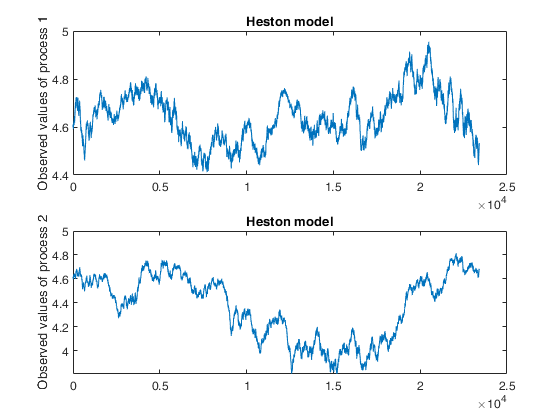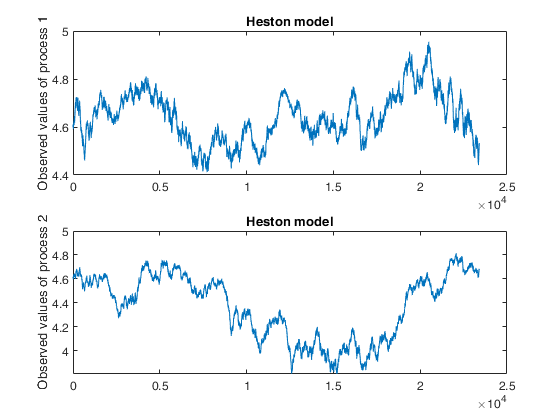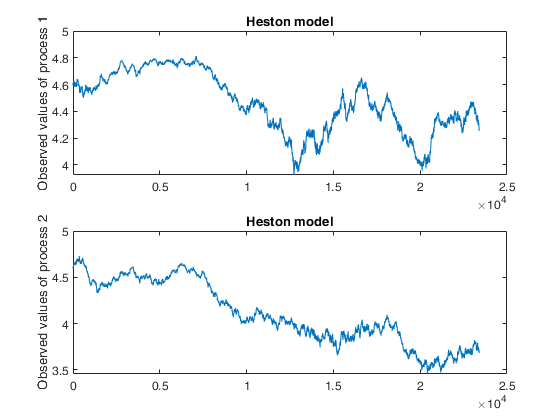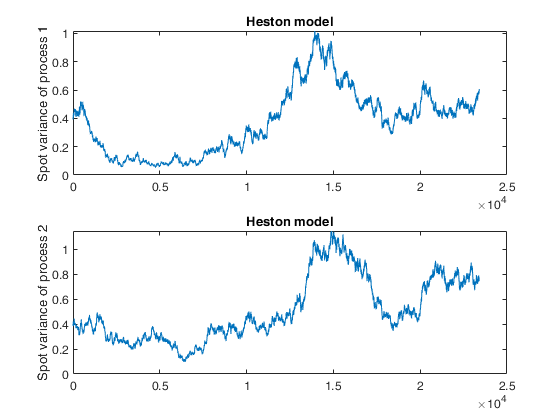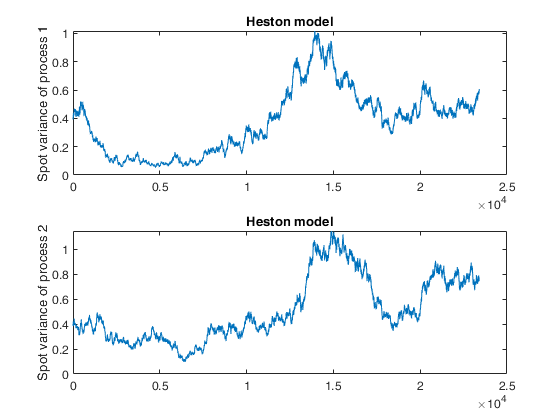Heston2D
Heston2D simulates observations and instantaneous variances from the bivariate Heston model
Syntax
Description
Heston2D simulates, using the Euler–Maruyama method, observations and instantaneous variances from a 2-dimensional version of the model by [S. Heston, The Review of Financial Studies, Vol. 6, No. 2, 1993].
Example of call of Heston2D for obtaining process observations only.x
=Heston2D(T,
n,
parameters,
Rho,
x0,
V0)
Examples
Input Arguments
Output Arguments
More About
References
Heston, S. (1993), A closed-form solution for options with stochastic volatility with applications to bond and currency options, The Review of Financial Studies, Vol. 6, No. 2.
 Example of call of Heston2D for obtaining process observations only.
Example of call of Heston2D for obtaining process observations only.